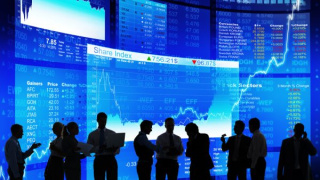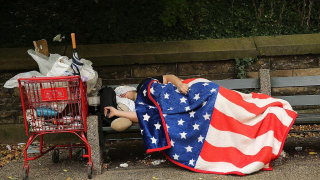The black swan of Wall Street
The overheating of the US economy could accelerate the rise in dollar rates and the withdrawal of aid from the Fed could end up weighing down the incipient and fragile world economic recovery since the phenomenon of economic globalization has made all the rational elements of the economy are interrelated with each other due to the consolidation of oligopolies, technological convergence and tacit corporate agreements. The real possibility of a new stock market crash would go unnoticed by most Rating Agencies due to the disconnection with reality that would lead them to justify the irrational exuberance of the markets, thus fulfilling the famous phrase of the iconoclast John Kenneth Galbraiht . "There are two kinds of economists: those who have no idea and those who don't even know that."
Indeed, our mind is capable of sequencing only fragments of the total sequence of the immense chaos genome, with which we inevitably resort to the term "butterfly effect" to try to explain the dizzying conjunction of centripetal and centrifugal forces that will end up configuring the disjointed puzzle. of the orderly chaos that is brewing. The "butterfly effect" transferred to complex systems such as the Stock Market, would have as a collateral effect the impossibility of detecting a mediate future in advance, since the quantum models they use would only be simulations based on previous models (Minsky's Theory of Financial Instability ), whereby the inclusion of only one incorrect variable or the sudden appearance of an unforeseen variable causes the margin of error of said models to be amplified in each simulated time unit until it even exceeds the stratospheric limit of one hundred percent, giving rise to a new black swan (stock market crash).
The Black Swan theory was developed by Nicholas Taleb in his book “The Black Swan (2010) in which he attempts to explain“ the psychological biases that make people individually and collectively blind to uncertainty and unaware of the massive role of the strange event in historical matters ”. Thus, due to the economic stimuli to alleviate the impact of the pandemic (estimated at more than 3 Billion Dollars), US investors were installed in euphoria (recalling the stock market boom of the 1920s that was a prelude to the stock market crash 1929), so they were unable to perceive the vertigo of altitude but the obvious risk of the withdrawal of aid by the Fed will cause large investors to feel for the first time altitude sickness that will lead them to reduce their exposure to risk with the consequent downward effect on stock prices.
In addition, the runaway inflation in the US (5% year-on-year rate in May), will accelerate the rise in interest rates on the dollar, causing investors to distance themselves from equity assets and for bears to rise at the helm of the ship. world stock market, leading to a selling psychosis that could trigger the outbreak of the current stock market bubble. Said outbreak will have as collateral effects the consequent financial starvation of the companies, the subsequent devaluation of the currencies of countless countries to increase their exports and as beneficial effects the forcing companies to redefine strategies, adjust structures, restore their finances and reestablish their credit. before the market (as happened in the stock market crisis of 2000-2002) and as collateral damage the ruin of millions of small investors still dazzled by the lights of the stratosphere, the financial starvation of companies and the consequent domino effect in the declaration of bankruptcies, the subsequent contraction of world trade, subsequent settlement of economic globalization and subsequent return to watertight compartments in the world economy.







